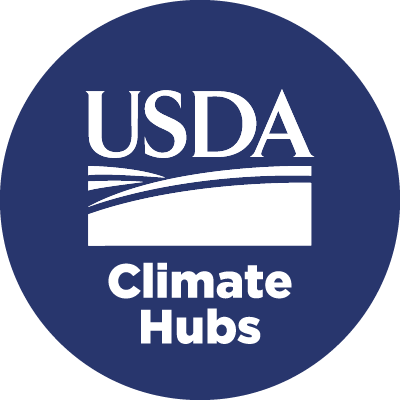La Nina Usda
USDA India palm oil imports are expected to spike by 48 to 87 million tonnes boosted by a gradual recovery in demand and low inventories. La Niña and Its Impact on South American Agriculture Presented To 2018 Agricultural Outlook Forum Grain and Oilseeds Session February 23 2018 Agricultural Weather Assessments World Agricultural Outlook Board Mark D.

La Nina Climate Pattern Has Developed Noaa Freshfruitportal Com
Importantly it also offers specific recommendations for anticipatory actions to mitigate the impacts of La Niña before it creates large-scale food security emergencies.

La nina usda. In a note to clients today the research houses analysts Leow Huey Chuen and Jacquelyn Yow said La Ninas impact on palm oil prices is dependent on damage to soybean crops the stock-usage ratio of soybean oil palm oil supply-demand dynamics and major global. Facebook Twitter LinkedIn Mail. - La Niña.
Maybe Brazils first corn crop will go to plan but the same cannot be expected for the safrinha crop. Soybean meal was mostly higher and bean oil was up on the bullish tone in the soy complex. Stephanie Ho and USDA meteorologist Brad Rippey Duration.
Ethanol futures were unchanged. Blue shading indicates increased likelihood of colder than average temperatures. Brusberg Chief Meteorologist USDA Office of the Chief Economist World Agricultural Outlook Board.
Impact of La Niña and an outlook of the potential effects on the agriculture sector in 20202021. For example it currently shows a 14 probability of the Nino 34 SST anomaly being less than -15C from November through February. The USDAs next set of supply and demand estimates is out December 9th.
A set of two-page region-specific overviews give outlooks and present potential impacts for the Midwest the Great Lakes region and the Missouri River Basin led by the National Oceanic and Atmospheric. The renewed La Nina will make itself most felt by early 2022 when we expect to hear more stories about drought poor crop conditions low yields and crop losses. Friday Oct 29th 2021 105 Views The Agribusiness Update.
Soybean yields could drop in Argentina and. From the Ag Information Network Im Bob Larson with your Agribusiness Update. El Niño criteria.
Average sea surface temperatures in the Niño-34 region of the equatorial Pacific Ocean were at least 05C 09F warmer than average 5N-5S 120W-170W in the preceding month and the anomaly has persisted or is expected to persist for 5 consecutive overlapping 3-month periods eg DJF JFM FMA etc and the atmosphere over the tropical Pacific exhibits. The graph shows the probability of La Niña blue bars El Niño red bars and non-ENSO or neutral conditions gray. The USDA currently has total production at 118 million tons.
Hi Edder I can imagine how disruptive a 3rd La Nina in a row could be. La Nina is likely to result in a drier climate in the Eastern Pacic and South America a major area for soybean production. USDA confirmed Thursday morning a new flash sale to unknown destinations of 132000 metric tons of soybeans.
Wheat Extends Gains as La Niña Fears Haunt Australia -- Daily Grain Highlights. The NOAA is forecasting that there is an 87 probability of a La Niña climate developing in December 2021 through February 2022 which may have implications for crops being grown in the next season. What is La Niña.
La Nina is here. NOAA Climate Prediction Center. The La Niña climate pattern that is currently developing in the eastern equatorial Pacific Ocean provides some general predictable outlooks for the coming winter and early spring.
Temperature outlook for Dec. November 23 2021 - 0358PM. Justin Glisan indicated we were in.
Not all events associated with La Nina weather patterns lead to higher palm oil prices according to UOB Kay Hian Research. La Nina Back for Second Year and USDA 115-billion ReConnect Program. In light of the recent La Niña news the outlook for California remains grim.
Scott Irwin Scott Irwin There is considerable interest in the likely magnitude of South American corn and soybean production in 2021 with much of the current focus on weather developments influencing yield prospects. A La Nina weather pattern officially formed as of September 10th according to the US Department of Agriculture. USDA recently reported that 73 of the pasture and rangeland in North Dakota was in poor to very poor condition with the statistics 78 in South Dakota 55 in Wyoming 49 in Colorado 31 in Nebraska and 26 in Kansas.
There will be re-stocking and. The development of a cool-water La Nina event in the Pacific Ocean appears to have had a variable impact on these two wheat-growing countries. The trade is monitoring development conditions in Argentina and Brazil ahead of the full emergence of the La Nina pattern.
The development of a cool-water La Nina event in the Pacific Ocean appears to have had a variable impact on these two wheat-growing countries. La Niña Expected to Influence 2021-22 Winter Climate. The wheat complex was higher on commercial and technical buying with December Chicago and Kansas City notching new.
Despite widespread La Niña-related concerns in the beginning of the marketing year Brazil seems to be on track to deliver the largest soybean crop of its history estimated at 142 million mt by Conab and 144 million mt by the USDA. La Niña is a recurrent global atmospheric-oceanic. Soybean meal and oil export sales were up on the week.
Traditional La Nina behavior is reflected in recent weather events. Regarding the La Nina intensity this webpage is a good resource for getting an idea about the likelihood of various intensity possibilities. Traditional La Nina Behavior is Reflected in Weather Events.
The second crops success is dependent on several factors including the soybean harvest speed fertilizer availability and La Nina. La Niña is likely 80 chance from September-November 2021 to December-February 2021-22 with a 60 chance of continuing through February-April 2022. The December USDA WASDE forecasts for Brazil corn and soybean production are 4330 and 4887 billion bushels respectively.
The USDA also reported that farmlands dedicated to growing sugarcane in the Philippines may dip to 390000 hectares this crop year from 403000 ha the previous crop yeara trend that has been. USDA meteorologist Brad Rippey discusses the impact that La Niña could have on weather around the globe and what it could mean for US. In a previous interview with the Iowa Agribusiness Radio Network Iowa state climatologist Dr.
Orange and red indicate increased likelihood of warmer than average temperature.
Usda Climate Hubs Usdaclimatehubs Twitter

Usda Climate Hubs Usdaclimatehubs Twitter


Posting Komentar untuk "La Nina Usda"